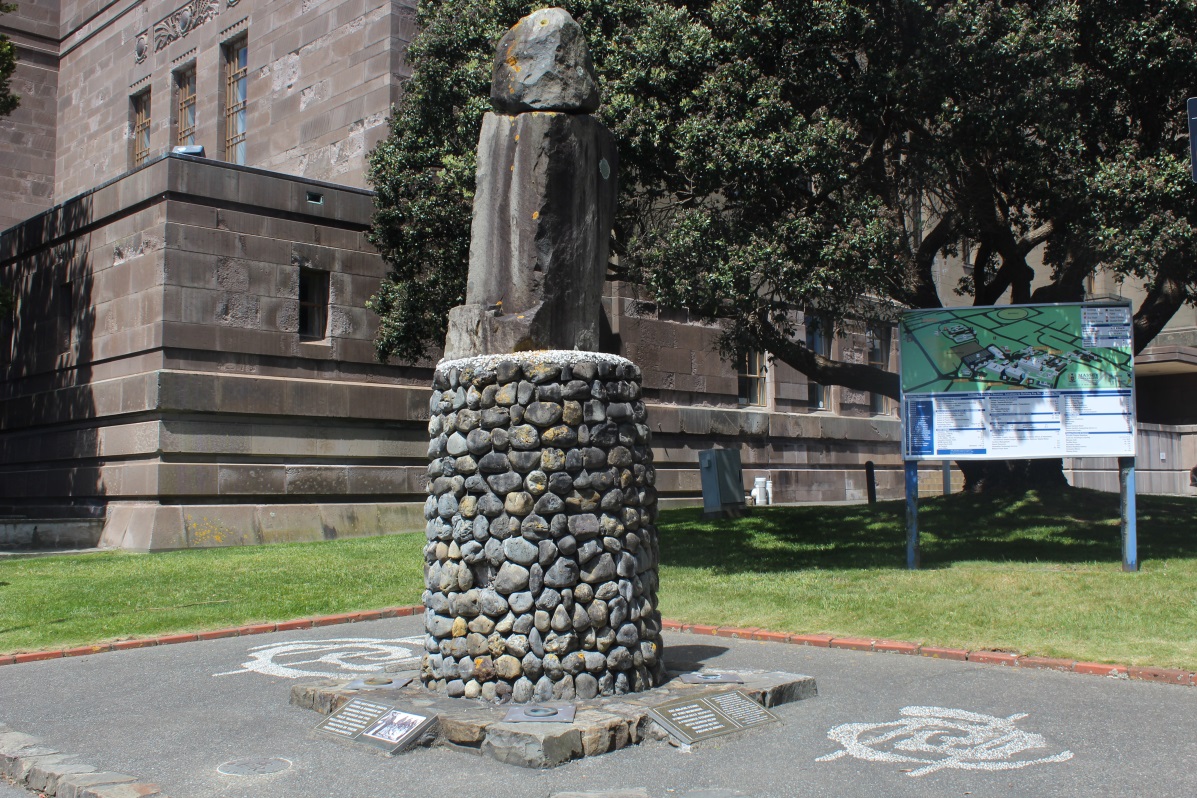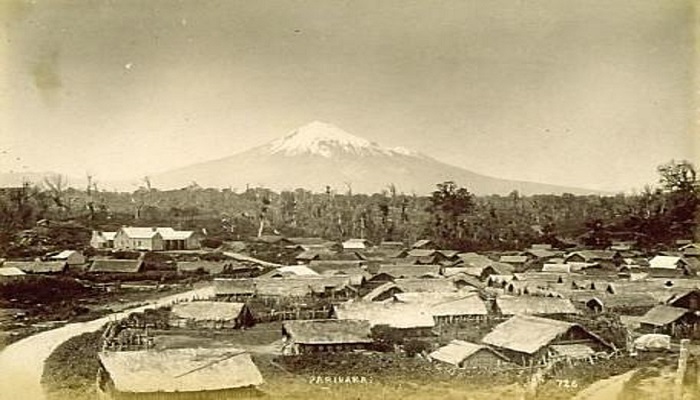On the coast of Aotearoa, near Mount Taranaki, there is a very important place called Parihaka which has a lot to teach us about the history of injustice in New Zealand, and the importance of hope and peace.
In the years following the signing of Te Tiriti o Waitangi in 1840, colonial greed and racism enabled the government to unlawfully confiscate land and wage war against groups of Māori who sought to defend their territory.
During the 1860s, the community at Parihaka became a haven for different groups of Māori, and a place of resistance to land confiscation and encroaching settlement. The people of Parihaka had a peaceful campaign, led by Te Whiti and Tohu, that consisted of ploughing up confiscated land, removing surveying pegs, and placing fencing.
In response, the government arrested these peaceful people and sent them far away, to Wellington, and to the South Island where they were forced to build roads. On 5 November 1881, Parihaka was invaded by a military force of 1600 armed constabulary. This is called Te Rā o te Pāhua, the day of plunder. Māori people who were not originally from the Parihaka area were forced to leave. Violence was inflicted against the people. Their leaders were arrested. Buildings were damaged. Te Whiti and Tohu were held without trial for two years, before returning home in 1883.
Despite all of this harm, Parihaka was rebuilt by its people, and still thrives today. Parihaka reminds us of what hope and working together can achieve, especially in the face of injustice.

A Place to Remember
At Pukeahu War Memorial Park, on the north-west corner of the old Dominion Museum building, there is a memorial dedicated to the people of Taranaki and Parihaka who were imprisoned in the Mount Cook barracks. The memorial represents a prisoner wrapped up in a blanket. The base of the monument is made of stones from Taranaki. As you wander through Wellington, this is the perfect spot to take a moment to reflect on the Parihaka legacy of peace.
Online resources for tamariki to learn more about Parihaka

Image: Parihaka by Josiah Martin on DigitalNZ.
AnyQuestions offers free online homework help to New Zealand school students. AnyQuestions provides a librarian chat service, from 1pm to 6pm Monday to Friday during the school year. The website also has great ManyAnswers articles on important topics and places. This Parihaka article will help show you more great places to find information!
Another great resource is Remembering Te Pāhuatanga o Parihaka | Story | DigitalNZ which brings together photos, biographies, and oral history interviews along with an article which discusses how waiata and poi have helped pass on stories.
We also have further articles on our general library blog for readers of all ages: Parihaka – Library Blog (wcl.govt.nz) Wellington City Libraries is grateful to have shared a Kōrero with Kura Moeahu – Library Blog.
With some help from teachers or caregivers, older tamariki might be able to use some of the longer books about Parihaka that can be found in our booklist: Remembering Te Pahuatanga o Parihaka | (syndetics.com).
Readers of all ages are encouraged to check out the following books!
Pukapuka for tamariki to learn more about Parihaka
 Maumahara ki tērā Nōema / nā Jennifer Beck rāua ko Lindy Fisher ; nā Kawata Teepa i whakamāori.
Maumahara ki tērā Nōema / nā Jennifer Beck rāua ko Lindy Fisher ; nā Kawata Teepa i whakamāori.
“It’s almost Guy Fawkes Night, and at the school speech competition Andy talks about Guy Fawkes and the Gunpowder Plot. The children cheer excitedly, thinking Andy will win the contest. But then, Aroha gets up, wearing a white feather in her hair, and tells the story of another fifth of November u the invasion of Parihaka in 1881.” (Syndetics summary) Remember that November / written by Jennifer Beck ; illustrated by Lindy Fisher.
Remember that November / written by Jennifer Beck ; illustrated by Lindy Fisher.
“It’s almost Guy Fawkes Night, and at the school speech competition Andy talks about Guy Fawkes and the Gunpowder Plot. The children cheer excitedly, thinking Andy will win the contest. But then, Aroha gets up, wearing a white feather in her hair, and tells the story of another fifth of November u the invasion of Parihaka in 1881.” (Syndetics summary)
 Peace warriors / Raymond Huber (2015)
Peace warriors / Raymond Huber (2015)
This book tells the heroic stories of brave New Zealander’s and people around the world who used non-violent resistance to pursue paths of peace. One of the stories is of Archibald Baxter, who refused to fight in World War 1 because he did not believe in killing. He faced brutal punishment and rejection for his courageous choice.

Amorangi and Millie’s trip through time / Keenan, Lauren
“Amorangi and Millie lost their mum. Their only clue to her whereabouts is a carving on a tree that says, I’m in the past! Rescue me! To do this, Amorangi and Millie must travel up every branch of their family tree and collect an object from each ancestor they meet. They must then be back in the modern day before the sun sets, or they’ll all be trapped forever in the past. In their travels, the children experience aspects of events in New Zealand history, such as the invasion of Parihaka, the Great Depression, World War Two, the Musket Wars and the eruption of Mount Taranaki. They also experience changes in the town and landscape, the attitudes of people and the way people live their lives”–Publisher information.” (Catalogue)